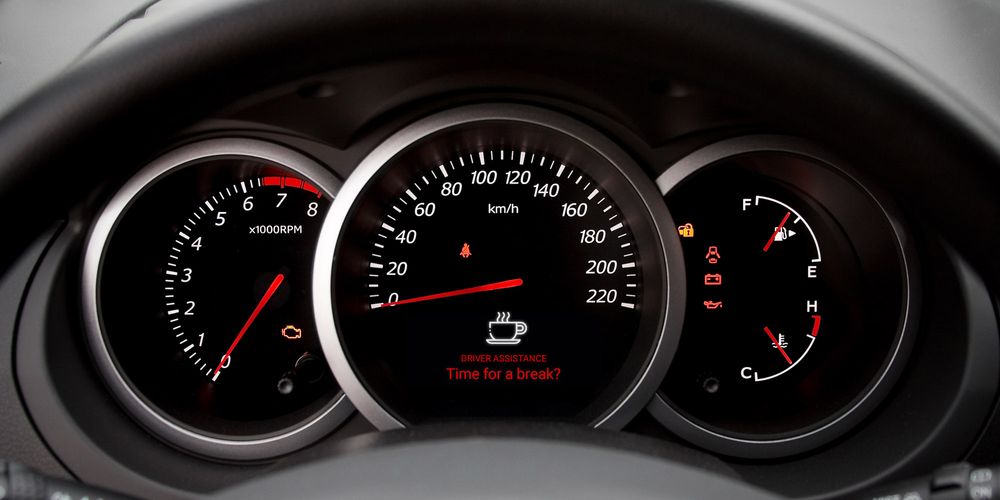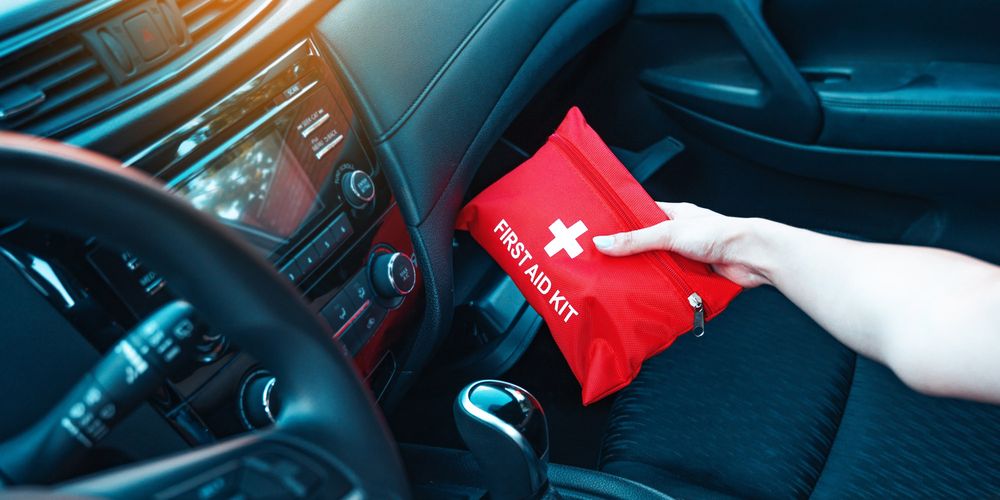
Why Driver Distraction Warning Systems Should Go Beyond Drowsiness Detection
Driver Monitoring Systems (DMS) are mandatory in many countries to detect driver fatigue and distraction in an effort to curtail fatalities on public roads. But is this enough? Can vehicle manufacturers do more to keep our families safe?
The rules are changing, and for the better. Over the past several years new government regulations have been introduced in places like China and Europe to enhance road safety by mandating automotive manufacturers to install Driver Monitoring Systems (DMS) in new vehicles to detect driver drowsiness and distraction.
Driver monitoring systems use built-in cameras that focus on a driver’s face to capture signs of fatigue and send warnings to the driver to take a break when needed. Fatigue and distraction signals are detected using eye and facial tracking which are captured via the camera and then processed by the DMS which typically uses machine learning algorithms to identify, for example, if the driver yawns, closes their eyes or frequently blinks.
Since the new mandates, automotive OEMs have been due diligently installing DMSs in new vehicles to meet the new regulations. In the first 9 months, DMS installations in China alone increased by 244%. Soon DMS’s will be as common as seat belts and airbags.

After the initial scramble to meet the new compliancy requirements, leading car manufacturers are now thinking outside the box and expanding the use of driver monitoring technology to introduce more advanced features beyond the mandatory distraction and drowsiness detection. However, these extra features are often limited to high-end car models due to the added cost and production time. At Neonode, we think driver safety should be a benefit enjoyed by all drivers, so we are helping car manufacturers to upgrade to a one-for-all DMS that is fast, flexible and fully scalable to accommodate custom and future features – including the ability to quickly implement over-the-air aftermarket add-ons to keep cars modern and safe for longer.
Neonode’s third-generation driver monitoring solution is camera and position agnostic, so it can easily be integrated with any existing cabin designs regardless of vehicle type, camera placement or lens type. Better yet, new features – no matter how atypical or complex – can be built, tested and implemented with our patented MultiSensing® technology in just a matter of days. With our exclusive machine perception methodologies, our software goes far beyond simple eye and facial tracking – we train our algorithms to determine emotion, cognitive state and driver intent using pixel perfect synthetic data, allowing manufacturers to design DMS safety features that are diagnostic, individualistic and creative - all of which can contribute to the vehicles competitive differentiation strategy.
Let’s take a look at some contemporary ideas that could drastically improve the effectiveness of driver warning systems and can help raise the bar of automotive safety.
Daydreaming
Drowsiness is not the only cognitive impairment that can compromise driver safety. Drivers can be mentally distracted by a plethora of things while on the road. Talking or texting on the phone, unruly backseat drivers, or trying to save a slippery slice of tomato from escaping the bun while eating a hamburger from the drive-through.
But some other surprising statistics show that drivers are quite likely to be distracted by their own thoughts. Daydreaming was noted as the number one reason for loss of concentration while driving by the Insurance Institute for Highway Safety, which accounted for 65% of fatal crashes classified by the institute under preoccupation.
So how can we use DMS to ensure that the car of someone’s dreams will not give them nightmares?
While we can detect if someone is eating a hamburger before the blob of sauce hits the drivers lap, we can’t yet decipher what someone is thinking (thank goodness). But with Neonode’s MultiSensing technology, we can assume someone is drifting into a daydream with physical queues, such as blink rate, gaze fixation and unconscious facial expressions. We could probably determine if the daydream is good or bad judging how they purse their lips or move their mouth, should you really want to know.
Predicting Driver Actions and Intentions
Doors. No, we are not talking about the 1960s rock band, but car doors that are opened into the path of other road users such as cyclists. This act has been reported to make up 19.7% of all reported bike crashes in some US states, and is so common worldwide that it even has its own verb: dooring.
By using Neonode’s DMS to analyze predictive behavior, it is possible to preempt certain intentions or actions that a driver may take. A simple intention to ”get out of the car” can be deduced by combining different signals from the vehicle with the body motions of the driver, for example, the car stops and/or is turned off, the seatbelt is unbuckled, and the driver or passenger is reaching for the door handle. The DMS can then be configured to warn a person if a bike is approaching or that the parking brake is not on.
Highway to Divorce
A driver who is not focused due to emotional stress is less likely to pay attention to road and traffic conditions. In fact, according to the Future of Safety Research Study from General Motors, drivers are almost ten times more likely to get into a crash if they drive in a highly elevated emotional state. This is especially true for those that have lost that loving feeling, to reference some more1960s pop music, because divorce tops the charts as the reason for car accidents occurring due to emotional stress. Research shows that the risk of a traffic accident quadruples during a divorce or separation. Oddly, it works the other way around too: getting into a car accident can lead to divorce. According to divorce lawyers, the stress, financial problems or even dealing with personal injury can make even strong relationships less tenable. Yikes.
While there is probably not a huge market for divorce detecting cars just yet (we hope), detecting irrational or negative emotional states can be lifesaving. Stress is our body’s normal response to everyday pressures, but it causes a release of hormones including adrenaline and cortisol which can cause adverse effects when behind the wheel. These hormones cause higher levels of aggression and can lead to impaired judgment, provoke rash decisions and sometimes even cause emotional road rage. Stress, when too overwhelming, can also lead to fatigue, depression and crying – quite obviously states to avoid while driving.
There are several ways AI can detect emotional stress in drivers using tell tail signs from posture, respiratory rate, chest movements, tapping or fidgeting fingers on the steering wheel and clenched muscles in certain parts of the face. Building features that remind the driver to take some deep breaths, pull over for a walk or even systematically change the music to soothing classical could save the driver from an accident – or divorce.
Diseases and Disorders
Even the best drivers in the world can be struck with a medical issue while driving. However, using DMS to design in-car detection features for those with known medical conditions could improve safety and reduce anxiety in at-risk drivers by having the vehicle ask, “are you ok?”
When looking at three common ailments relating to traffic accidents, statistics have shown that diabetic events are behind 20% of crashes, heart attacks account for an additional 11% and drivers with ADHD are 37% more likely to get into a crash, especially in the first 4 years of having a license.
Many car manufacturers base their brand identity on care and safety. Taking it one step further to incorporate medical and mental wellbeing could be a serious and compassionate differentiator.

Of course, drowsiness detection remains a crucial component of driver monitoring systems, but it is clear that expanding the capabilities to address more unconventional issues could significantly improve road safety and driver mindfulness. By addressing diverse distractions, monitoring cognitive states and predicting driver intentions, we believe that DMS can contribute to creating a safer driving environment and better cars for everyone.
Regulations for Advanced Driver Distraction Warning Systems (ADDW)
Want to learn more about the European Driver Monitoring Regulation (EU) 201972144? Download a copy of the explanatory memorandum issued by the European Parliament.
Download DMS EU Regulation 2019/2144